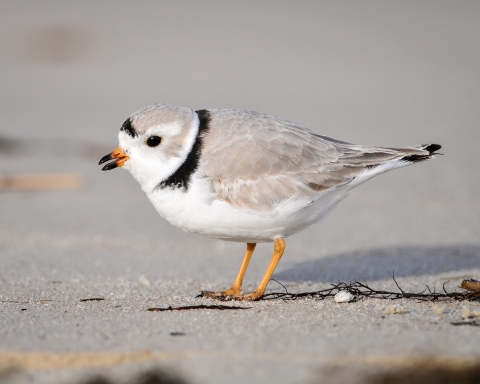
The Prairie Pothole Region produces 50 percent of North America’s waterfowl; all species of ducks common to the Prairie Pothole Region use the District. The primary breeders are mallards, gadwalls, and blue-winged teal. Green-winged teal, northern pintails, northern shoveler, American wigeons, canvasbacks, redheads, lesser scaup, and ruddy ducks also nest in the area. Giant Canada geese breed throughout the District.
The numerous wetlands draw common, black, and Forster’s terns as well as ring-billed, Franklin’s, and California gulls. Breeding marsh and water birds include double-crested cormorants, black-crowned night herons, coots, and pied-billed, horned, eared, and western grebes. Common prairie wetland birds are American avocets, marbled godwits, willets, soras, common snipes, and upland sandpipers.
Sandhill cranes also migrate through the area during spring and fall. Migrating endangered whooping cranes may occasionally pass through in April and October. Critical habitat for the endangered piping plover can be found at Appam Lake WPA, a Globally Important Bird Area.
Grassland birds, such as Baird's sparrows, grasshopper sparrows, chestnut-collared longspurs and bobolinks, inhabit the native prairie, as well as the tame grasslands and grazed pastures, within the District.
Raptors include ferruginous, red-tailed, and Swainson’s hawks, as well as northern harriers. Four species of falcon – American kestrel, merlin, peregrine, and prairie – can be found on off and on throughout spring, summer, and fall; some migrate through, while others nest.
Each spring, sharp-tailed grouse gather on open areas, known as “leks,” on many WPAs. The grouse gather to perform their courtship dance. Males stamp their feet rapidly and rattle their tail feathers, moving in circles to attract females.
